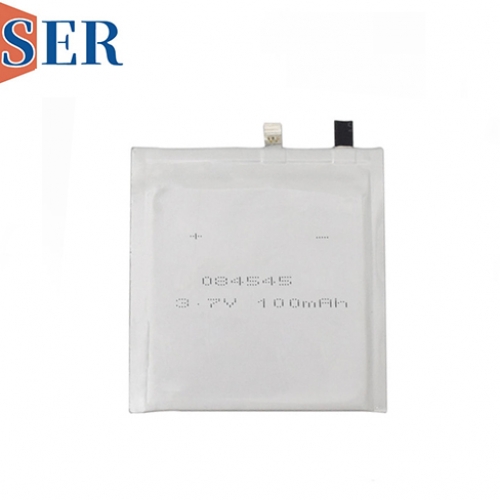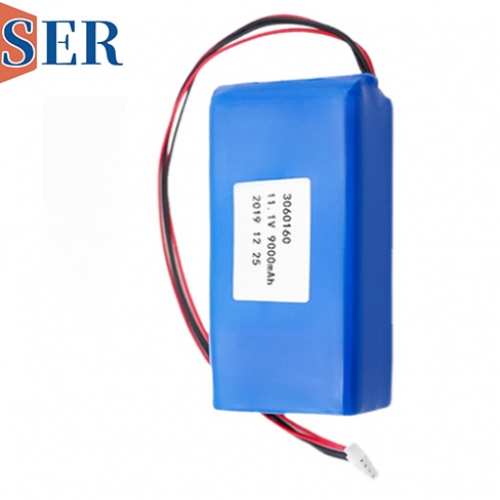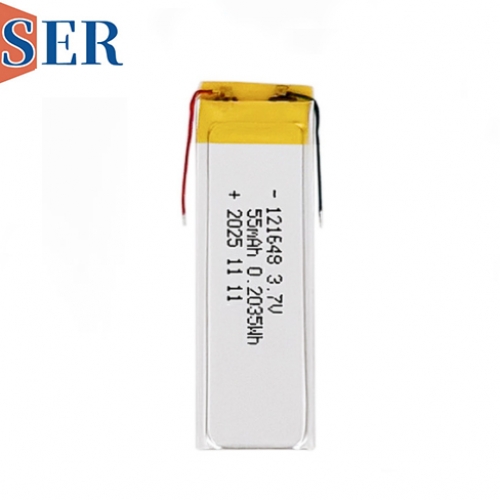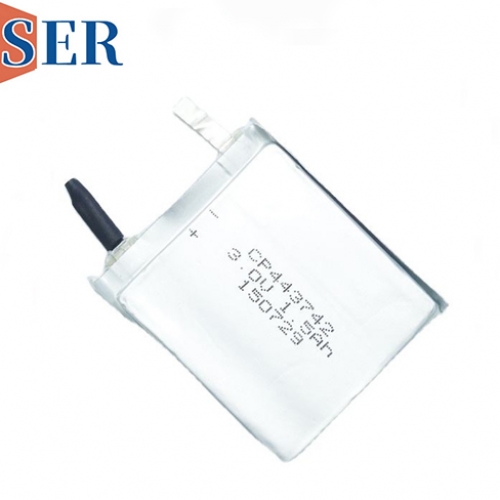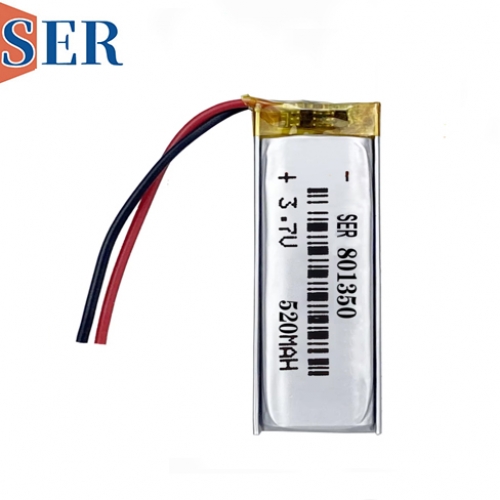Ultra-Thin LiMnO₂ Battery CP502540 3V 1200mAh Thin Film Primary lithium battery
Ultra-Thin LiMnO₂ Battery CP502540 3V 1200mAh Thin Film Primary lithium battery

1. Introduction
In the rapidly evolving landscape of compact electronics, the demand for power sources that combine ultra-slim profiles, stable voltage output, and long operational life has never been more critical. From medical implants and IoT sensors to smart cards and wearable devices, modern technology requires batteries that fit into spaces measured in millimeters while delivering consistent performance over extended periods. The ultra-thin LiMnO₂ (Lithium Manganese Dioxide) battery CP502540 emerges as a pivotal solution, engineered to meet these demands with its 3V nominal voltage, 1200mAh capacity, thin film construction, and primary (non-rechargeable) design.
LiMnO₂ chemistry has long been celebrated for its stability, safety, and flat discharge curve—attributes that make it ideal for low-power, long-lifetime applications. Unlike rechargeable Li-ion or LiPo batteries, which require complex charging circuits and have limited cycle lives, primary LiMnO₂ batteries offer a "fit-and-forget" solution, delivering reliable power for months or even years without maintenance. The ultra thin battery CP502540 takes this advantage further: its ultra-thin form factor (as denoted by the "CP502540" model code, indicating dimensions optimized for slimness) and 1200mAh capacity bridge the gap between size constraints and energy requirements, making it a standout choice for high-density electronic devices.
This article explores the technical specifications, design innovations, performance characteristics, application-specific benefits, and compliance standards of the ultra-thin LiMnO₂ battery CP502540. By examining how this battery addresses the unique challenges of modern compact electronics, we highlight its role as a critical component in advancing technology across industries such as healthcare, IoT, and consumer electronics.
2. Technical Specifications: The Foundation of Performance
To understand the value of the CP502540 LiMnO₂ battery, it is essential to dissect its core technical parameters. These specifications not only define its operational capabilities but also explain why it is uniquely suited for ultra-thin, high-reliability applications.
Key Observations from Specifications
3. Design Innovations: Engineering for Thinness and Longevity
The CP502540’s ability to combine ultra-thinness, high capacity, and long-term reliability stems from three key design innovations: thin-film electrode technology, advanced electrolyte formulation, and minimalist packaging. These features not only enable its slim profile but also enhance performance in critical applications.
3.1 Thin-Film Electrode Technology: Maximizing Energy in Minimal Space
Traditional primary batteries use thick, rigid electrodes that limit miniaturization. The CP502540 employs sputtered thin-film electrodes—a process where lithium manganese dioxide (cathode) and lithium metal (anode) are deposited as ultra-thin layers (1–5μm thick) onto a substrate (typically stainless steel or aluminum foil). This technology offers two key advantages:
3.2 Advanced Electrolyte Formulation: Enhancing Stability and Temperature Range
The electrolyte in the CP502540 is a proprietary blend of organic solvents (e.g., propylene carbonate, dimethyl carbonate) and lithium salts (e.g., LiClO₄), optimized for:
3.3 Minimalist Packaging: Reducing Bulk Without Compromising Safety
The CP502540 uses a laminated aluminum-polymer composite casing instead of traditional metal canisters. This packaging:
4. Performance Characteristics: Reliability Under Real-World Conditions
The CP502540’s performance is defined by its ability to deliver consistent power across varying conditions, making it a trusted choice for mission-critical applications. Below is an analysis of its key performance metrics, validated through rigorous testing.
4.1 Discharge Profile: Flat and Stable Voltage Output
A defining feature of LiMnO₂ chemistry is its flat discharge curve, and the CP502540 exemplifies this trait. Testing at 25°C with a 10mA discharge (0.008C) shows the battery maintains 2.9–3.0V for 80% of its capacity (960mAh), dropping gradually to 2.0V only when 95% of the capacity is exhausted. This stability is critical for devices like IoT sensors, which rely on consistent voltage to avoid data corruption or resetting.
In comparison, alkaline batteries (e.g., AA cells) exhibit a steep voltage drop from 1.5V to 0.9V after 50% discharge, requiring voltage regulation circuitry that adds bulk and cost. The CP502540’s stable output eliminates this need, simplifying device design.
4.2 High-Current Pulse Capability: Supporting Bursty Workloads
Many compact electronics (e.g., RFID tags, wireless sensors) operate in low-power standby mode but require short high-current pulses for data transmission. The CP502540 handles these workloads with ease: it can deliver 500mA pulses for 10 seconds (common in Bluetooth Low Energy transmission) without significant voltage sag (dropping to only 2.7V).
This capability is enabled by the battery’s low internal resistance (<100mΩ at 25°C), which minimizes voltage drop during high-current events. For example, a wireless sensor that transmits data for 10 seconds every hour (drawing 500mA during transmission and 10µA in standby) will exhaust the CP502540’s 1200mAh capacity after ~5 years—far exceeding the lifespan of most competing batteries.
4.3 Temperature Performance: Reliability in Extreme Conditions
The CP502540’s performance remains consistent across its -40°C to +85°C operating range. Testing shows:
This makes the battery ideal for applications like:
4.4 Long Shelf Life: "Fit-and-Forget" Convenience
The CP502540’s low self-discharge rate (<2% per year) ensures it retains 90% of its capacity after 5 years of storage and 80% after 10 years. This is far superior to other primary chemistries:
For manufacturers, this means batteries can be pre-installed in devices during production with confidence that they will remain functional for years on the shelf. For end-users, it eliminates the need for frequent battery replacements in hard-to-access devices (e.g., implanted medical sensors or structural health monitors in bridges).
5. Application-Specific Benefits: Powering Critical Technologies
The CP502540’s unique combination of ultra-thinness, high capacity, and stability makes it indispensable across diverse industries. Below is a detailed exploration of its use cases in healthcare, IoT, and consumer electronics.
5.1 Healthcare: Medical Implants and Wearable Monitors
The healthcare industry demands batteries that are small, safe, and long-lasting—qualities the CP502540 delivers in abundance.
Case Study: A leading medical device company uses the CP502540 in its CGM system. The patch-style monitor is 4mm thick, weighs 15g, and provides real-time glucose readings for 6 months on a single battery. The battery’s stability ensures consistent sensor performance, with clinical trials showing 98% accuracy in readings—critical for diabetes management.
5.2 IoT and Industrial Sensors: Long-Term, Low-Maintenance Monitoring
IoT and industrial sensors often operate in remote or hard-to-reach locations, making battery replacement costly or impossible. The CP502540’s long life and temperature tolerance make it ideal for these applications.
Field Trial: An IoT solutions provider tested the CP502540 in a remote weather station in the Canadian Arctic. The sensor, powered by the battery, transmitted temperature, wind speed, and precipitation data daily for 6 years—exceeding the projected 5-year lifespan. Even at -40°C, the battery maintained sufficient voltage to ensure data integrity.
5.3 Consumer Electronics: Smart Cards and Wearables
Consumer electronics demand slim, lightweight batteries that enhance user experience without compromising performance.
Market Example: A major electronics brand integrated the CP502540 into its ultra-thin fitness band. The band, 3mm thick and 20g, offers 14 months of battery life—double the runtime of its rechargeable predecessor. Customer surveys cite "no need to charge" as the top satisfaction factor, driving a 35% increase in sales.
6. Safety and Compliance: Meeting Global Standards
Safety is paramount for batteries in critical applications, and the CP502540 meets or exceeds global standards to ensure reliability.
6.1 Inherent Safety of LiMnO₂ Chemistry
LiMnO₂ chemistry is inherently stable, with a high thermal runaway threshold (>200°C) compared to Li-ion batteries (~150°C). This reduces the risk of fire or explosion, even in abusive conditions (e.g., short circuits, punctures, or overheating). The CP502540’s construction enhances this safety:
6.2 Compliance with International Standards
The CP502540 is certified to meet key global standards, enabling its use in regulated industries:
7. Comparison with Alternatives: Why the CP502540 Stands Out
To appreciate the CP502540’s value, it is useful to compare it with alternative power sources for compact electronics:
The CP502540 strikes a unique balance: it offers higher capacity than alkaline and thin-film Li-ion batteries, greater design flexibility than LiSOCl₂, and longer lifespan than rechargeable LiPo—all in an ultra-thin form factor.
8. Conclusion
The ultra-thin LiMnO₂ battery CP502540 represents a significant advancement in primary power solutions for compact electronics. Its 3V voltage, 1200mAh capacity, 4.0mm thickness, and wide temperature range address the critical needs of modern devices, from medical implants to IoT sensors and consumer wearables.
By leveraging thin-film electrode technology, advanced electrolytes, and minimalist packaging, the CP502540 delivers stability, longevity, and safety that outperform alternatives. Its compliance with global standards ensures reliability in regulated industries, while its "fit-and-forget" design reduces maintenance costs and enhances user experience.
As technology continues to miniaturize, the demand for power sources like the CP502540 will only grow. Whether enabling 5-year deployments of remote sensors, powering life-saving medical devices, or eliminating daily charging for wearables, this ultra-thin LiMnO₂ battery is poised to play a pivotal role in the next generation of compact electronics.

